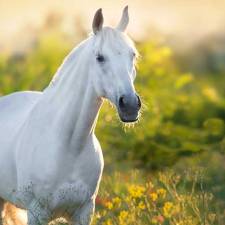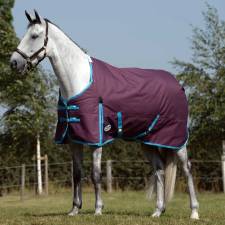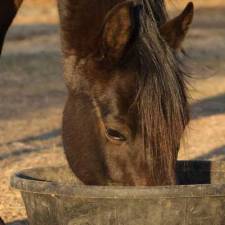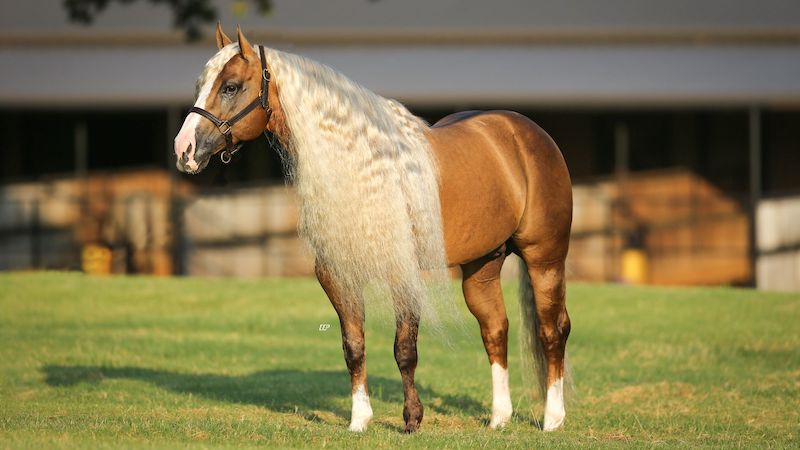
by Kristin Pitzer
With all the work that goes into getting a horse prepared mentally and training-wise for an event, you might be tempted to neglect your grooming routine before or during a show. After all, judges won’t typically deduct points if a horse has a tangled tail or small urine stains, as long as he’s performing the correct maneuvers skillfully.
Still, there’s something about a freshly groomed horse that improves its presence in the show pen and helps make a lasting first impression. Even better, the time you put into caring for your horse’s appearance can pay off by helping you look and feel like a winner, even if you don’t place.
Quarter Horse News asked Katie Davis, assistant trainer at Trent Harvey Performance Horses, for some tips on how to groom horses so they’re show-ready.
Bathe Before Shows
The day before you leave to take your horse to a show, Davis recommended giving him or her a bath with a high-quality shampoo and conditioner. That way, you’re putting your best foot forward from the moment you arrive, rather than unloading a horse that looks dirty and neglected.
“It’s good presentation for your farm — you don’t want to be rolling out of the trailer with a bunch of poop stains on your horse,” Davis said. “Obviously, anything can happen in the trailer depending on how long your haul was, but you want to take pride in your farm and pride in your horses.”
Be sure to use products formulated for horses, as other soaps could strip the hair of natural oils and leave the coat dull and drab. During the event, you can make your horse’s bath last longer by thoroughly rinsing the sweat and loose hair off them after every ride.
Keep Manes Manageable
Davis rides reining horses, which tend to have long, flowing manes, but her advice on mane care can apply to any show horse. For starters, when bathing the horse, focus on getting the mane free of any dirt and debris. Then, once it’s clean, use a mane brush and detangling spray to carefully comb out any snags.
“Always start from the bottom and work your way up when you’re brushing out a long mane, just like you would with long human hair,” Davis said. “Detangle one knot at a time, rather than all of them at once.”
When you’re not showing, you can secure the mane in small braids to protect the hair. Davis likes to give each horse a set of fresh braids the night before hauling, securing them with braider bands made for horse manes.
“The smaller the braid, the longer it will last,” Davis said. “If you make really wide sections, their skin is going to stretch as they reach their neck down and shorten as they reach up, pulling on the hair. If you take smaller sections, you’re not going to have that issue.”
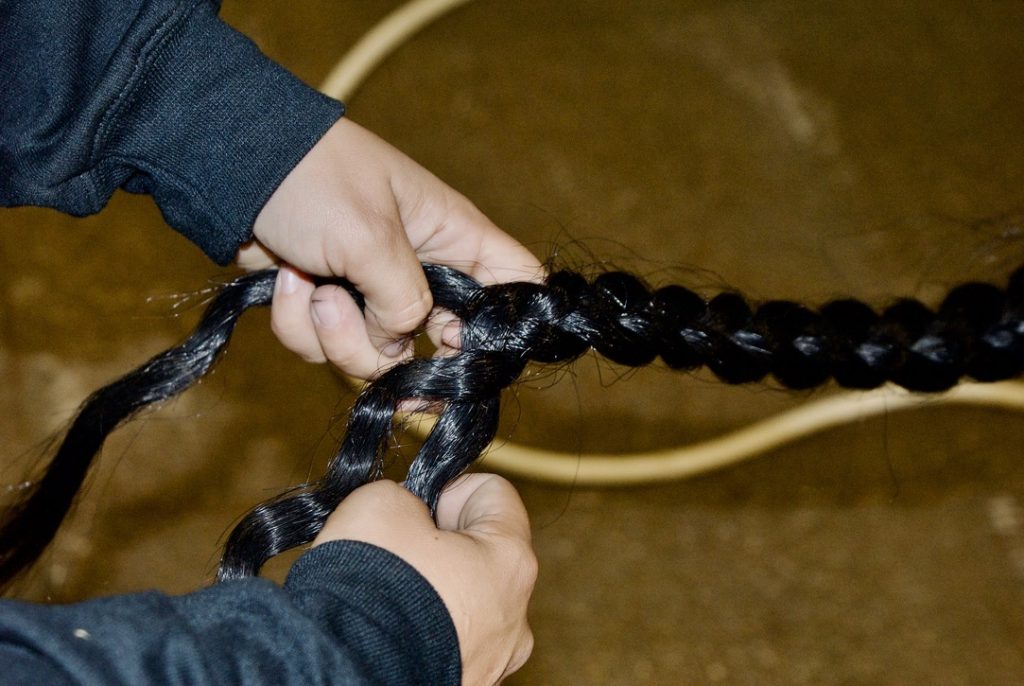
Protect Tails
Tails should be treated like manes when brushing them out — for instance, never insert a brush into the hair at the top of an unbrushed tail and yank straight down. This is a sure way to break your horse’s tail hair, resulting in shorter, thinner tails. Instead, start at the bottom of the tail, and detangle any knots you find gently.
After the tail is clean and brushed, you can decide whether to leave it loose or braid it and put it in a tail bag. Because reining horses run, stop and back up hard, their tails are often put up while they’re being ridden to avoid stepping on them and ripping any hairs out. Otherwise, unless Davis has a horse that constantly pees on its tail, she won’t leave tails braided.
“The ones we leave unbraided, we just keep them brushed and braid them daily before riding,” Davis said. “There’s just a less likely chance they’ll pull a out a chunk of hair if the tail is loose because if it gets caught on something, it just combs through like a brush, rather than getting stuck on a braid and pulling out a chunk from the top.”
Don’t Forget Faces
One thing Davis sometimes sees at shows is horses that are clean from the neck down but have dusty faces, usually because they don’t enjoy having their faces washed. If you’re going for the “wow” factor, though, a shiny, clean face can really add to your horse’s appearance.
“You want to make sure that up under their forelock and the backside of their ears doesn’t get a buildup of sweat and dirt,” Davis said. “I usually just use water, unless I see buildup, and then I’ll use a betadine soap and let it sit about five to 10 minutes before I rinse it off. That way, I don’t have to scrub really hard and irritate the horse more than I’m already doing.”
In addition to cleaning dirt and debris off the horse’s face, the betadine scrub will also kill any yeasty bacteria or funguses that might be living on the skin, she added.
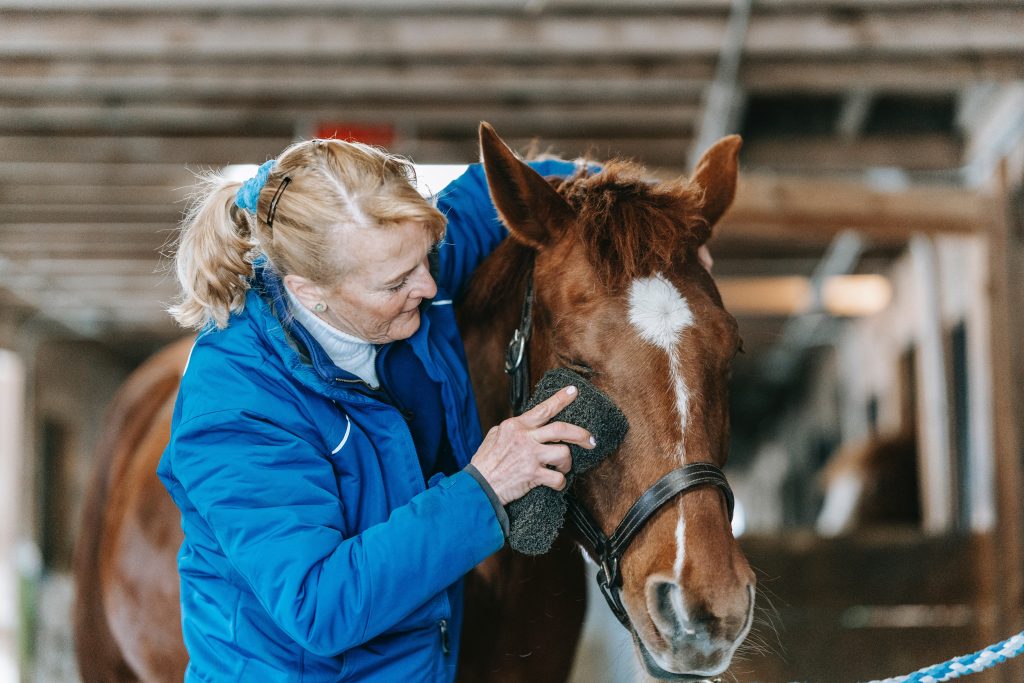
Bring Your Tools to the Warm-Up Pen
Getting your horse clean and prepared for a show doesn’t end with a single bath and hair brushing. You’ll need to maintain that level of cleanliness throughout the event, especially right before your horse enters the show pen.
Before you head to the ring, prepare a small grooming bag with a couple brushes, some towels and grooming sprays. That way, after you warm up, you can freshen your horse up for his turn in the spotlight, even if he got a little sweaty beforehand.
“I go through a lot of towels wiping off faces, wiping out mouths and nostrils, and cleaning off sand — making sure it doesn’t look like they’ve just been sweating when they go in,” Davis said. “I’ll brush out the tails, give them a good coat of fly spray and a little bit of a shine spray, and then brush them down to help the shine spray settle into their coat.” It might seem like a lot of effort to get your horse in show-ready shape, but a horse that looks good can be a big confidence booster while showing everyone else you’re a serious contender from the get-go.
This article originally appeared on American Quarter Horse News and is published here with permission.
There are more informative and entertaining articles in our section on Health & Education. While you're here be sure to check out our Curated Amazon Store.









